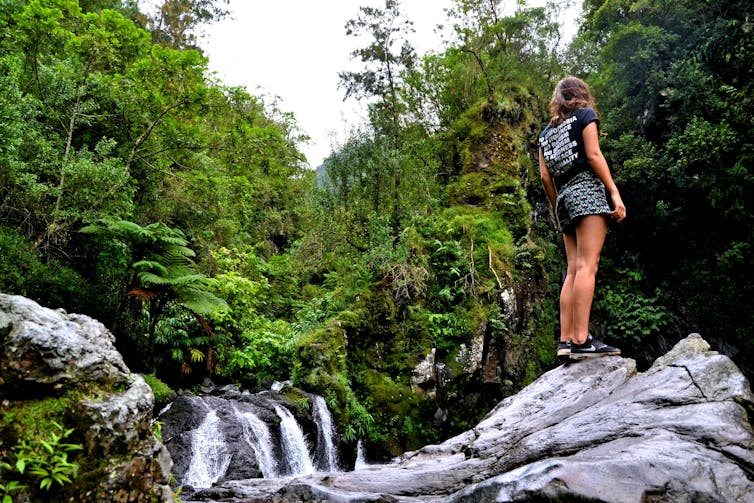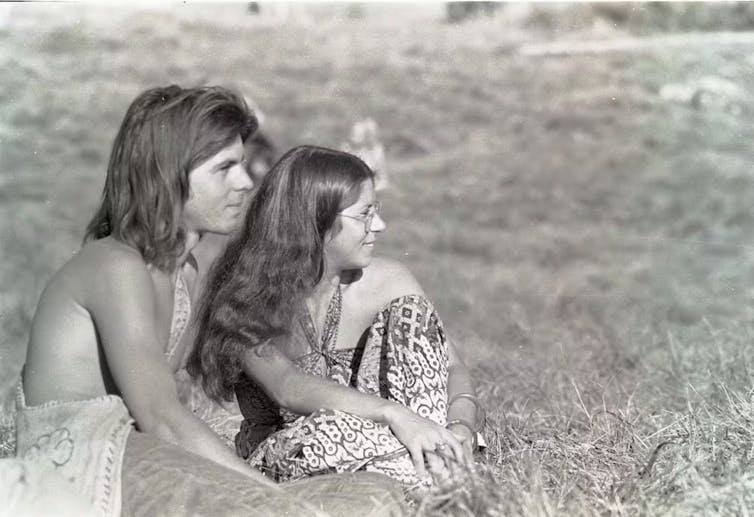Spirituality is increasingly popular with young Australians: recent research shows 38% of Gen Z Australians identify as spiritual.
It also reports 50% of them believe in karma, 29% in reincarnation and 20% in astrology. When it comes to activities equated with spirituality, 28% of Gen Z Australians practise meditation and 22% practise yoga.
In Australia, spirituality is strongly, enduringly central to Aboriginal and Torres Strait Islander peoples, and culturally and religiously diverse communities. Yet until recently, spirituality has received far less attention than religion.
Spirituality may be good for the environment too. The most recent trend in studies of religion – frequently associated with spirituality – is a reported close connection with nature. This was shared by 76% of Gen Z Australians.
In Australia, we believe spirituality is expressed as a down-to-earth “relational naturalism”. It’s particularly linked to Indigenous, Buddhist, Hindu and eco-spiritualities that acknowledge sacredness in and connection with the natural world, not just in heavenly heights.
Spiritual or not, nature-based connection is certainly on the rise. Young Australians also state that their affinity with nature informs their ethics – in terms of what they eat and consume, and their environmental activism.
So what is spirituality? How is it different from religion? And why is it so popular?

What is spirituality?
Spirituality is a connection with something greater than the self – which could be God, consciousness or nature – that results in a sense of responsibility to care for oneself and others. It often includes the natural world.
Spirituality has often been seen as the “individualised good-guy”, as a counterpart to the “institutional bad-guy” of religion. But this stereotypical binary is increasingly outdated.
Spirituality, like religion, is mostly practised in groups, or in communities. Often, it’s with a charismatic leader, and follows certain codes of practice, related to physical postures or activities, diet and lifestyle more generally.
According to Warraimaay historian Victoria Grieve-Williams, spirituality is deeply relational and ethical, honouring interconnections with human and more-than-human beings.

In his bestselling book Sand Talk: How Indigenous Thinking can Save the World, Aboriginal scholar Tyson Yunkaporta also stresses complexity, relationality and connectedness as central principles of First People’s wisdom.
People can identify as spiritual but not religious, or as religious and spiritual. Both religion and spirituality can be social and inform how we live in the world.
In the Gen Z Australians survey, 22% self-identified as spiritual but not religious, with a further 16% identifying as both religious and spiritual.
How spiritual are Australians?
Aboriginal and Torres Strait Islander peoples have rich and diverse spiritual traditions. “The Creator Spirit was with us long before the British invaded our lands, and our faith has been nurtured over thousands of years,” writes Bidjara theologian and professor, Aunty Anne Pattel-Gray.
Grieves-Williams notes that connection to and responsibility for land and waterways – learned and shared through story – are central to Aboriginal spirituality.
Trawloolway theologian Garry Deverell explains that First Nations spirituality “begins with the earth”.
Through colonisation and migration, Europeans brought Christian and Jewish religions, which also include spiritual dimensions, to Australia. And many immigrants, particularly from the Asia-Pacific region, first introduced their religious and spiritual traditions to Australia in the 19th century, before the introduction of the 1901 Immigration Restriction Act.
Many of their spiritual frameworks also stress interdependency with and compassion for all lifeforms.
Spirituality is big business
So-called Western interest in spirituality had earlier iterations in theosophy, an esoteric philosophy based on older religions and myths, and spiritualism, a way of life combining philosophy, science and religion. Both were popular at the turn of the 20th century.
But spirituality boomed globally as part of the alternative 1960s counterculture. In Australia, it took off after the 1973 Aquarius Festival in Nimbin, Northern New South Wales.

Since then, interest in spirituality and the expanding $4.4 trillion wellness industry has grown exponentially.
This includes the mainstreaming of teachings through social media, and of practices such as meditation, yoga, retreats, conscious dance, plant medicine, astrology and tarot. Many of these derive from Indigenous, Buddhist or Hindu traditions.
Some spiritual and wellness influencers can problematically appropriate these traditions. However, others respectfully acknowledge the origins and lineages of their spiritual practices.
“True yoga is not just a workout,” says Indian-American yoga teacher and researcher Rina Deshpande, who urges people to learn the history of their practice. “Classically, it is an ancient Indian philosophy espousing an eight-limbed approach to conscious living.”
At the turn of the 21st century, some experts predicted spirituality would eclipse religion, given this thriving “spiritual marketplace”.
Spiritual movements and wellness influencers have gained prominence through critiquing the ills of modern capitalist consumerism, with a focus on personal and planetary wellbeing. Some high-profile examples include Jay Shetty, entrepreneur and host of the podcast On Purpose, and Australian Sarah Wilson, author of I Quit Sugar.
Many of these influencers focus on self-care and the need to slow down and be mindful – and to foster a more respectful and sustainable relationship with ourselves and the natural world. At the same time, some turn their goods and services into products to be marketed, increasingly through social media, to lift their profiles.
Spiritual risks and harms
While spirituality was previously associated with hippies and “peace, love and mung beans”, reports of spiritual harms – emotional, sexual and financial abuse – are increasingly being revealed in both religious and spiritual communities.
This includes many allegations of abuse by students of prominent gurus such as Tibetan Buddhist Sogyal Rinpoche, famous for his teachings on death and dying, and Bikram Choudhury, founder of Bikram yoga.
The uptake of conspiracy theories in spiritual communities – and vaccine resistance within them – have also been deeply troubling in recent years. This “conspirituality” is linked to spiritual exceptionalism and bypassing, where distrust of medical and state authority, combined with individual body sovereignty, led to denying the suffering the COVID pandemic caused society’s most vulnerable.
Not all ‘woo-Anon’
Conspirituality during COVID certainly made spirituality more public. It also seemed to draw more men into spiritual movements, with some Australian male conspiritual leaders mobilising “spiritual warriors” to “cosmic war”.
However, in a pilot study on Spirituality and Wellness in Australia conducted at the height of the pandemic, only a minority of self-identified “spiritual” people among the 202 participants had conspiritual views.
Just 2% of participants thought the virus was caused by global elites, pharmaceutical companies, aliens or demonic forces – and just 5% said they would not be vaccinated. By contrast, 88% supported lockdowns and 91% supported mask wearing.
This is significant, given that media coverage of conspirituality tends to overstate its prevalence within wellness communities.
It’s vital not to tar all spiritual people as “woo-Anon”, particularly as they represent an increasingly significant percentage of the Australian population.
Australian spiritual influencers, notably Sarah Wilson, also played a significant role in countering conspirituality at the peak of the pandemic, by drawing on spiritual narratives of relational and compassionate care.
The uptake of conspiracy theories among spiritual communities remains concerning. But research reveals relational spiritual narratives and practices can also play a significant role in both personal and planetary wellbeing. This includes countering vaccine resistance – in and beyond Australia.
Spirituality can be experienced in personal ways, but it is also complex and communal. It is important to be aware of spirituality’s potential benefits and risks.
This article is part of a series The Conversation is running on Religion and Spirituality. You can read other articles in the series here.

